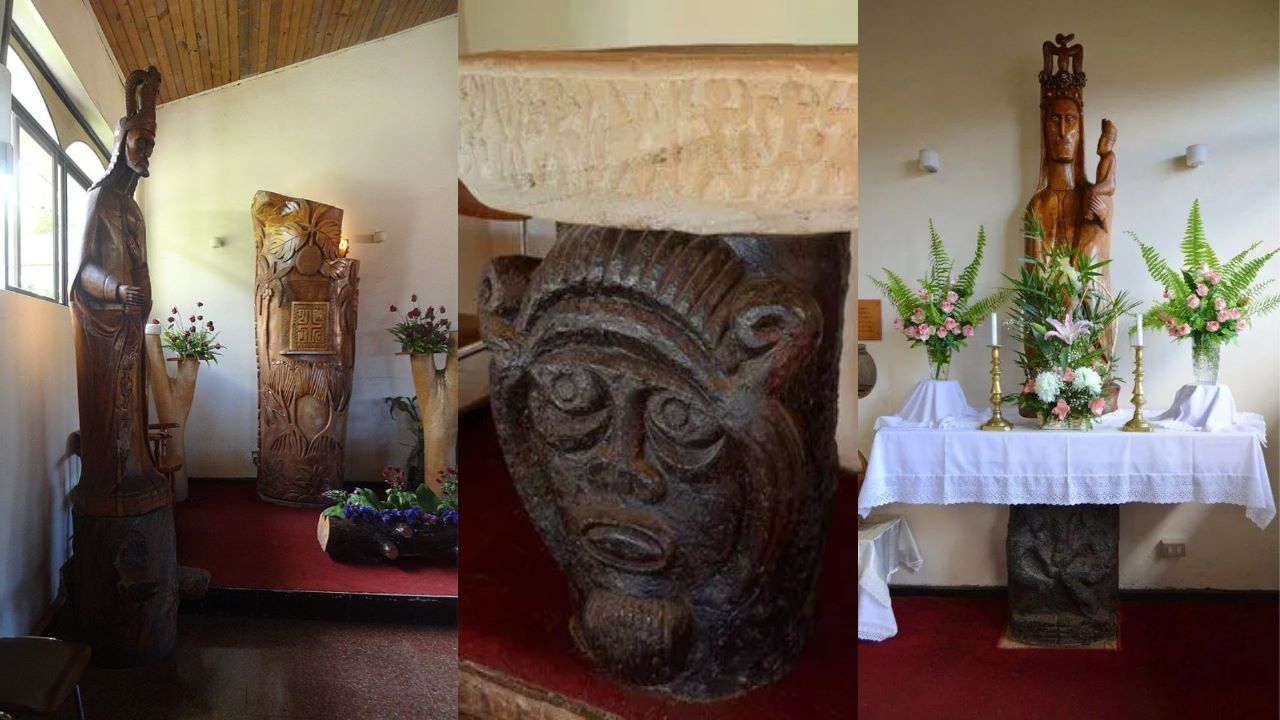RAPA NUI, Chile: Rapa Nui, a remote Chilean territory in the mid-Pacific known as Easter Island, has a Catholic church with artwork reflecting the islanders' ancestral culture as well as Christian beliefs. Stained glass windows depicting figures resembling Rapa Nui's inhabitants, created by a French-born artist, are among the eye-catching works.
The artist, Delphine Poulain, was born in Paris 52 years ago and has loved Rapa Nui since she first visited in 1994. She smiles as she recalls
During their return to France, she fell in love with the man who had been her childhood boyfriend. They now have two children of their own, and all four have called Rapa Nui home since 2014.
Poulain said she appreciates the freedom and tranquility afforded by the island's remoteness, which is home to about 7,700 people.
Last year, in gratitude for the blessings Rapa Nui had bestowed on her, Poulain gave a gift: the stained glass represents the 14 Stations of the Cross in the Church of the Holy Cross, located in Hanga Roa, the main town of the island.
Today, the Rapanui community is predominantly Catholic, but their religious activities are closely linked to ancestral beliefs.
The musical themes that the faithful sing at Mass recount Bible passages translated into the Rapanui language. The wooden statues representing the Virgin Mary and the Holy Spirit are not inspired by Western symbolic art but are based on the physique and heritage of the islanders' ancestors.
The statue of Our Lady near the altar of the church looks like a moai. Near the main entrance, the third symbol of the Holy Trinity is not a dove but a manutara, a bird considered sacred in the 19th century.
The adaptation of Catholic symbolism to the ancestral culture of Rapa Nui was essential to maintaining the religious observance that European missionaries propagated in the 18th century.
The Rapanui people protect their identity, tending to fully welcome outsiders only if they try to absorb the culture of the islanders. On a tomb outside the Church of the Holy Cross, where the remains of beloved missionary Sebastián Englert are kept, the inscription reads:
"He lives among us and speaks our language."

Poulain said winning local acceptance was not easy, but she was patient. His stained-glass windows are another stop on the way.
Since she started placing them in the church on December 24, 2021, some of the Rapanui who weren't previously welcoming her now wave when they see her pass.
"I have so much respect for the island and the people," she said.
Her family lives by the beach, where, long ago, she dreamed about moving. When they moved here, the family only had a tent to protect themselves. Now their house is a repository of what the island has given them.
The roof is made of sheet metal, and the rest is wooden. Dishes are washed where the bottom of the tub used to be; above the dining area is a lamp that used to be a metal trash can.
"There was a lot of hardship, but there was also a lot of fun." "It was my dream, and living your dream is amazing," Poulain said.
Inside his studio, there's a tree next to a makeshift desk where the artist finds inspiration. His work begins with sketches on a blank sheet of paper. Then she put her images on canvas with acrylic paint.
For the stained glass windows promised for the church, she needed a pigment that can only be found in France, so getting it will take time, and she still has 10 out of 14 stained glass windows left to complete.
Poulain never formally studied art. But her parents have books at home, and she remembers reading one about the mysteries of the world where she first discovered Rapa Nui. His artistic style has changed over the years, but the Polynesian aesthetic has remained the same.
In addition to his artwork, Poulain owns seven horses, earning an income by giving rides to tourists.
Sometimes she sat outside her house, sipping wine and watching her horses approach for their supper. The scene could have been an imaginary landscape from one of his paintings; instead, it was his longtime dream come true.